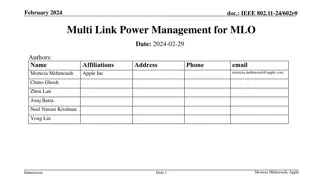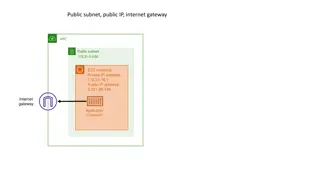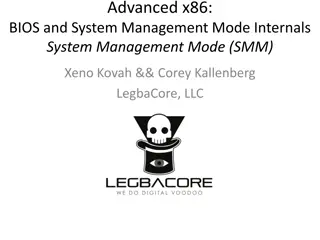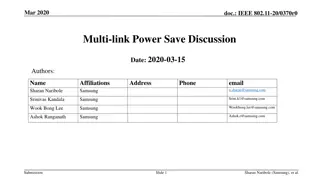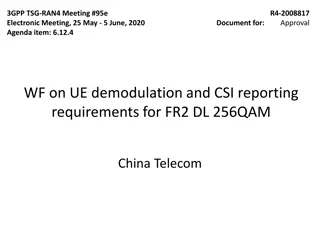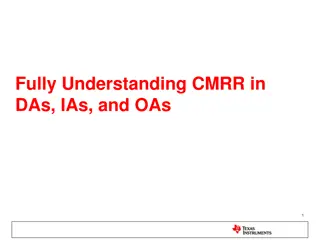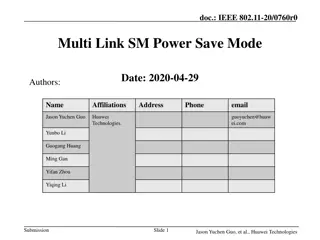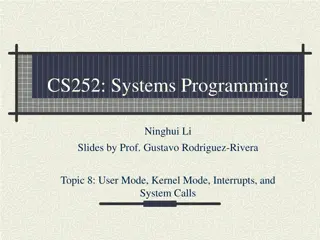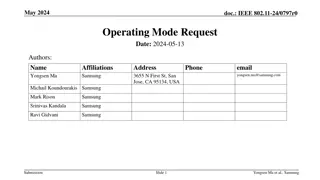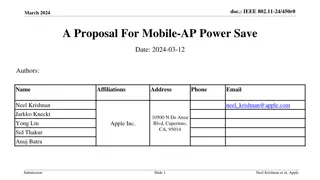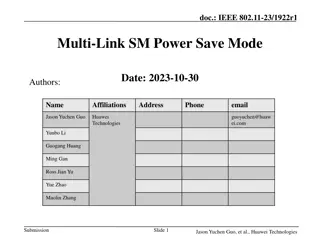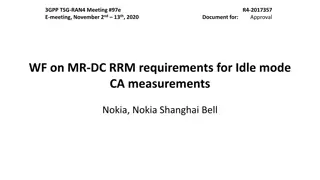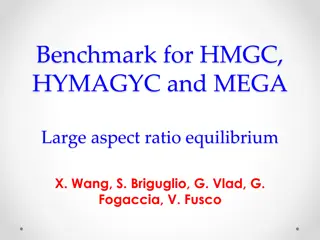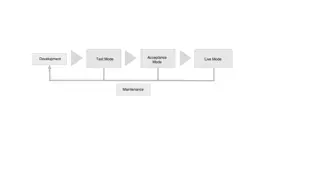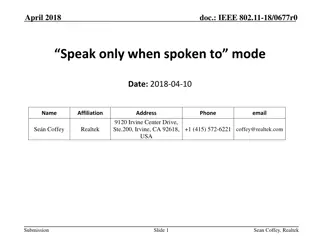Power Management Mode Definition
This document discusses the definition of the initial power save state for STAs on each link after the multi-link setup exchange in a WLAN scenario. It includes examples, baseline rules, and proposals for power management modes.
Download Presentation

Please find below an Image/Link to download the presentation.
The content on the website is provided AS IS for your information and personal use only. It may not be sold, licensed, or shared on other websites without obtaining consent from the author.If you encounter any issues during the download, it is possible that the publisher has removed the file from their server.
You are allowed to download the files provided on this website for personal or commercial use, subject to the condition that they are used lawfully. All files are the property of their respective owners.
The content on the website is provided AS IS for your information and personal use only. It may not be sold, licensed, or shared on other websites without obtaining consent from the author.
E N D
Presentation Transcript
March 2020 doc.: 20/0391r0 Power save state after multi-link setup Date: 2020-03-15 Authors: Name Affiliations Address Phone email Laurent Cariou Intel Po-Kai Huang Intel Minyoung Park Intel Submission Slide 1 Laurent Cariou, Intel Corporation
March 2020 doc.: 20/0391r0 Objective Multi-link setup procedure was agreed to setup multiple links between an AP MLD and an non-AP MLD. During that procedure, depending on the negotiated TID-to-link mapping, multiple links will be enabled We agreed that the default mapping is that all TIDs are mapped to all setup links and all links are enabled Once this is settled (after multi-link setup), STA is able to change its power save states on each link independently. What is currently not defined is: what is the initial power save state of the STAs on each link, right after the multi-link setup exchange. That s what we propose to define in this contribution Submission Slide 2 Laurent Cariou, Intel Corporation
March 2020 doc.: 20/0391r0 Example to better understand Typical example: AP MLD operating on 3 links (2.4/5/6GHz) Non-AP MLD with 3 links (2.4/5/6GHz), but with single radio functionality (only one STA of the non-AP MLD can be awake at a time) 3 links are setup with default mapping: TIDs mapped to all 3 links, all 3 links enabled Submission Slide 3 Laurent Cariou, Intel Corporation
March 2020 doc.: 20/0391r0 Baseline rules and proposal Baseline spec defined association on a single link, and mandates that the power save mode of the STA, right after the end of the association process, is the active mode (power save state therefore in awake state). Following this, STA can obviously change its power state/mode as it wants. On the link on which multi-link setup frames are exchanged, we propose to follow the same approach: STA is in active mode On the other links that become enabled, we propose that the initial state is doze state (in power save mode). Only possible option for our single radio non-AP MLD in the example in previous slide Most logical solution also for multi-radio non-AP MLDs to save power Obviously, right after this, STA can change its power mode/state through specific signaling Submission Slide 4 Laurent Cariou, Intel Corporation
March 2020 doc.: 20/0391r0 Straw polls Do you agree to add to the 11be SFD: When a link becomes enabled for a STA that is part of a non-AP MLD through multi-link setup sent on that link, the initial power management mode of the STA, immediately after the signaling exchange, is active mode When a link is enabled for a STA that is part of a non-AP MLD through signaling (multi- link setup or TID to link mapping update) send on another link, the initial power management mode of the STA, immediately after the exchange, is power save mode, and its power state is doze Submission Slide 5 Laurent Cariou, Intel Corporation



